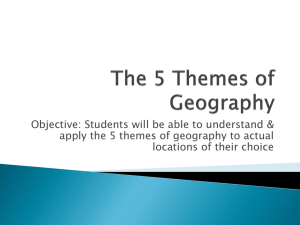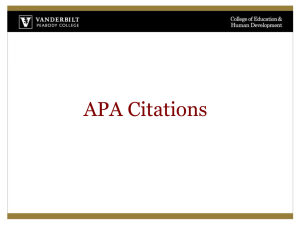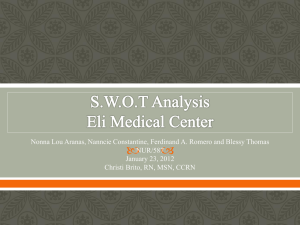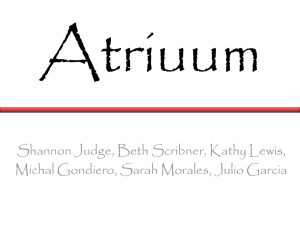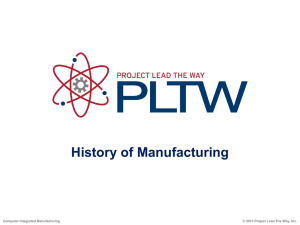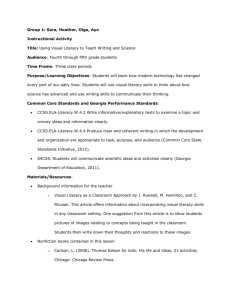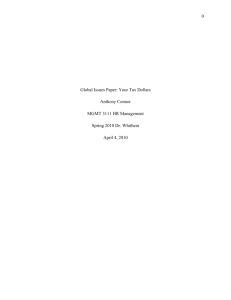Conflict Process
advertisement
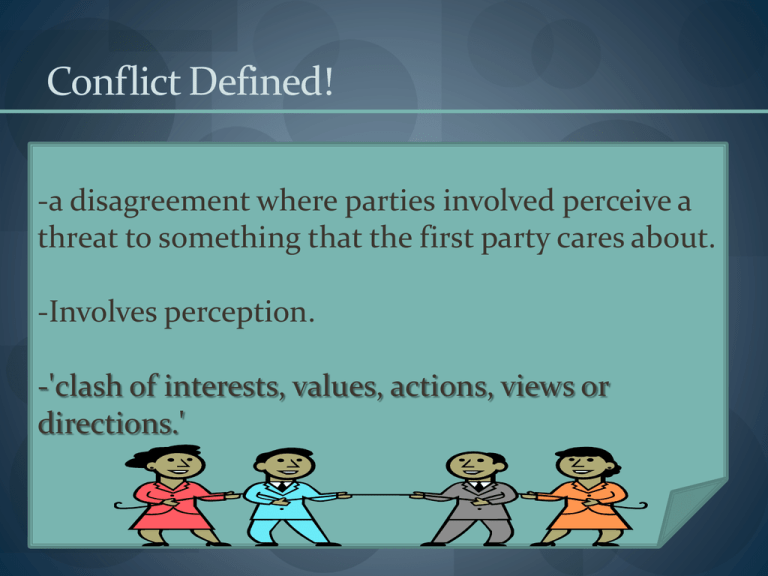
Conflict Defined! -a disagreement where parties involved perceive a threat to something that the first party cares about. -Involves perception. -'clash of interests, values, actions, views or directions.' How the changing views come about -motivated by many needs - people try to meet economic needs at work - no conflict exists between individual and organizational objectives -people act rationally for self interest - we act alone to satisfy individual needs -not always logical -management requires effective social skills, not just technical skills -job satisfaction will lead to higher job productivity The 3 Changing views of Conflict Traditional Human Relations Interactionist • Bad, caused by trouble makers • Should be avoided or suppressed • Natural, inevitable • Cannot eliminate, may contribute to group performance • A positive force and essential to performance effectively. Can be functional or dysfunctional. • An atmosphere of tension is essential in any organization Some Potential Causes of Conflict - Specialization - Conflict management style - Interdependence - Perception - Common Resources - Values and Ethics -Authority -Emotions - Relationships - Status Inconsistencies - Communication barriers - Jurisdictional -Cultural Differences Transformation of conflict space into opposing interests Disruption of expectations Balance of power Involves the choice to perceive opposing interest Results in conflict behaviour Improves quality of decision Oppose goals of conflict stimulate members of the organization to increase their knowledge and skills Less motivation by group members, time consuming Increases contribution to organizational innovation and productivity. Upsets personal psychological functioning Creates environment for selfevaluation and change Poor quality of decision Upsets psychological functioning Being aware of existing problems Facilitates group cohesiveness Relieves minor tensions Medium for problemsolving Clears air of unexpressed resentments Catalyst for positive change Better decisions made Task • Over contents and goals of work • Differences in viewpoints • Effective decision making Psychological • Inside the person Relationship • Interpersonal relationship • Interpersonal differences • Poor decision making Process • Delegate resources Identifying Work place Conflict, Causes A specific type of conflict that occurs in workplace Personality or style differences and personal problems Organizational causes: leadership, management, budget, and disagreement about core values can also contribute Avoid authority- and domain-related disputes, improve policies, procedures and rules, re-apportioning existing resources or adding new, altering communications POSSIBLE OUTCOMES OF A CONFLICT Win-Win • Both parties needs are met • Ends up happy Win- Lose • Only 1 winner and 1 loser • Traditional perception Lose-Lose • Neither party benefits • Ends up unhappy How to behave during a conflict Focus • Knowing what the individual wants • Identify the best outcome Needs • Asking what the other party wants (never assume) • Anticipate the person’s response Listen • Let him feel you care • Acknowledge differences and seek suggestions HIM • Address the other party’s interest first. • Explain benefits and begin and end with positive words Appropriate Conflict Management Strategies Conflict Resolution – process of attempting to resolve a conflict Accommodate Avoid Compete Compromise Appropriate Conflict Management Strategies Conflict Stimulation – creating and increasing of conflicts Communication Bringing in the Restructuring Appointing a outsiders the organisation devil’s advocate The 5 conflict management styles Avoid Compromise Collaborating Accommodate Competing http://www.child.gov.ab.ca/whatwedo/familyviolence/pdf/ncn0886.pdf Kare Anderson’s Model for Conflict Resolution STEP 1 STEP 2 Reach out to find the other person’s main needs. Tell yourself your main needs. THE ROUND TRIP STEP 4 Propose a solution that supports their main needs and yours as well. STEP 3 Listen to the other person. Conflict Check List It’s time to take some action! Step 1: Win/win Step 2: Creative response Step 3: Empathy Step 5: Managing emotions Step 6: Willingness to resolve Step 7: Mapping the conflict Step 8: Mediation Step 4: Appropriate assertiveness Step 9: Broadening perspectives Conclusion of Conflict as a Group - Inevitable - Learn to address our differences and needs - work together as a group to solve all difficulties - Each person should have a role to play instead of waiting for leader to assign task - Confident positive outcomes if conflict is constructively managed - Improve self-awareness - Strengthen relationship Summary/ Learning Points - Conflict can occur due to different goals and expectations - Necessary for better decisions - Optimal level of conflict can result in high performance - Increased group performance - Types of outcome; win-win is the best situation. - Resolving and stimulating conflict lead to desired level of conflict. - The appropriate conflict management techniques APA Style Citation Free Management Library, Authenticity Consulting LLC. (1997). Basics of Conflict Management. Retrieved 16 January 2007 from, http://www.managementhelp.org/intrpsnl/basics.htm Michele Geary. (n.d.). Possible Outcomes of Conflict. Retrieved 16 January 2007 from, http://faculty.dccc.edu/~mgeary/conflict/sld005.htm (n.d.). Conflict Checklist. Retrieved 16 January 2007 from, http://www.cdc.gov/od/adr/training/q02chk.pdf Wikimedia Foundation Inc. (n.d.). Conflict Resolution. Retrieved 16 January 2007 from, http://en.wikipedia.org/wiki/Conflict_resolution Wikimedia Foundation Inc. (n.d.). Ways of resolving conflict. Retrieved 16 January 2008 from, http://en.wikipedia.org/wiki/Conflict#Ways_of_addressing_conflict APA Style Citation GreenSpring Educational Institute. (n.d) Programs. Retrieved 16 January 2007 from, http://www.greensprings.org/sup/restricted/lesson13.htm Free Management Library. Authenticity Consulting, LLC. (1997). Basics of Conflict Management. Retrieved 16 January 2007 from, http://www.managementhelp.org/intrpsnl/basics.htm CNET Networks, Inc. (2007). Using Conflict in Organizations. Retrieved 16 January from, http://findarticles.com/p/articles/mi_m4035/is_3_45/ai_68217165 (2007) BusinessDictionary.com. Retrieved 16 January 2007 from, http://www.businessdictionary.com/definition/conflict-stimulation.html Wikimedia Foundation Inc. (n.d.). Workplace Conflict. Retrieved 16 January 2008 from, http://en.wikipedia.org/wiki/Workplace_conflict APA Style Citation Wikimedia Foundation Inc. (n.d.). Conflict Retrieved 16 January 2008 from, http://en.wikipedia.org/wiki/Conflict Wikimedia Foundation Inc. (n.d.). Conflict Management. Retrieved 16 January 2008 from, http://en.wikipedia.org/wiki/Conflict_management Natural Resources Management and Environment Department. (1997). Session5 Conflict Management. Retrieved 16 January 2007 from, http://www.fao.org/docrep/W7504E/w7504e07.htm Professor Edward G. Wertheim. (n.d). Historical background of Organizational Behaviour. Retrieved 16 January 2007 from, http://web.cba.neu.edu/~ewertheim/introd/history.htm

